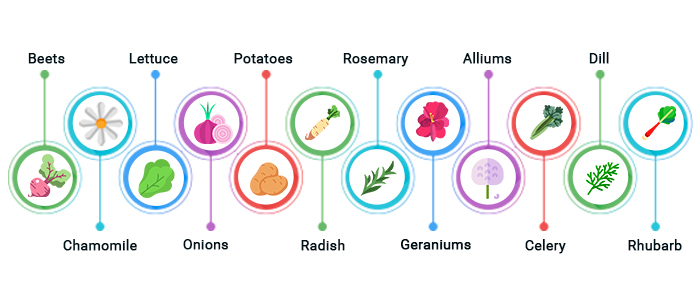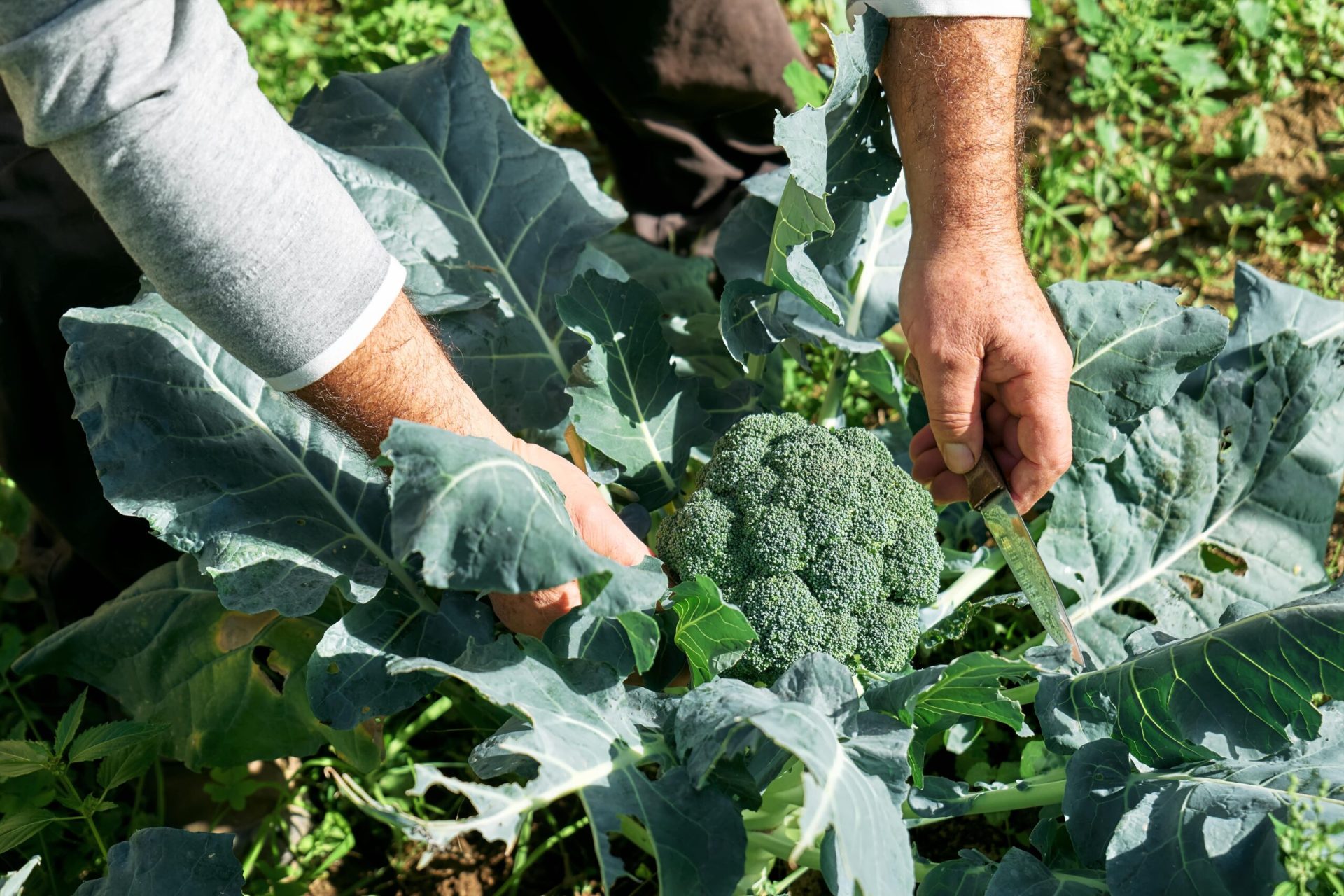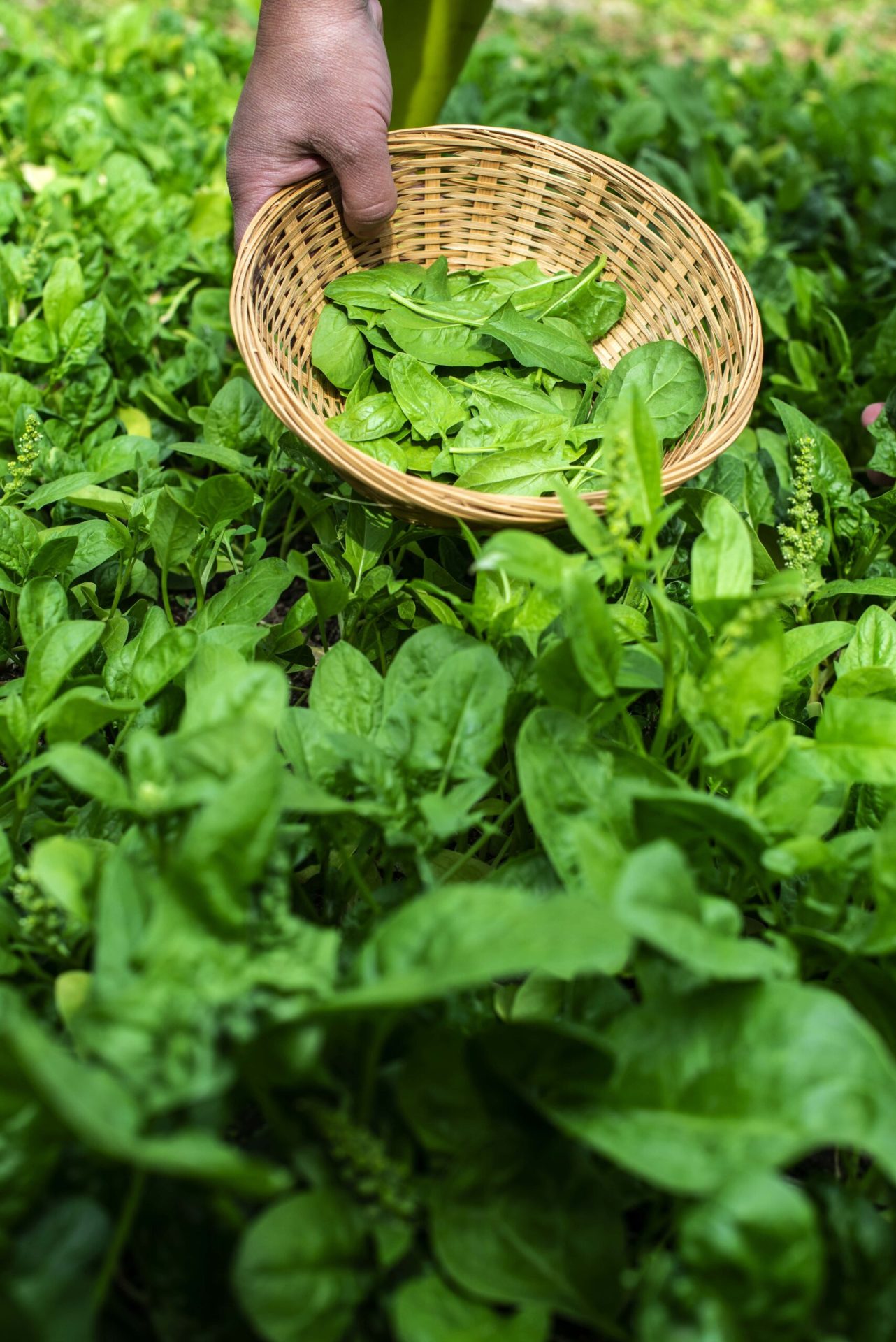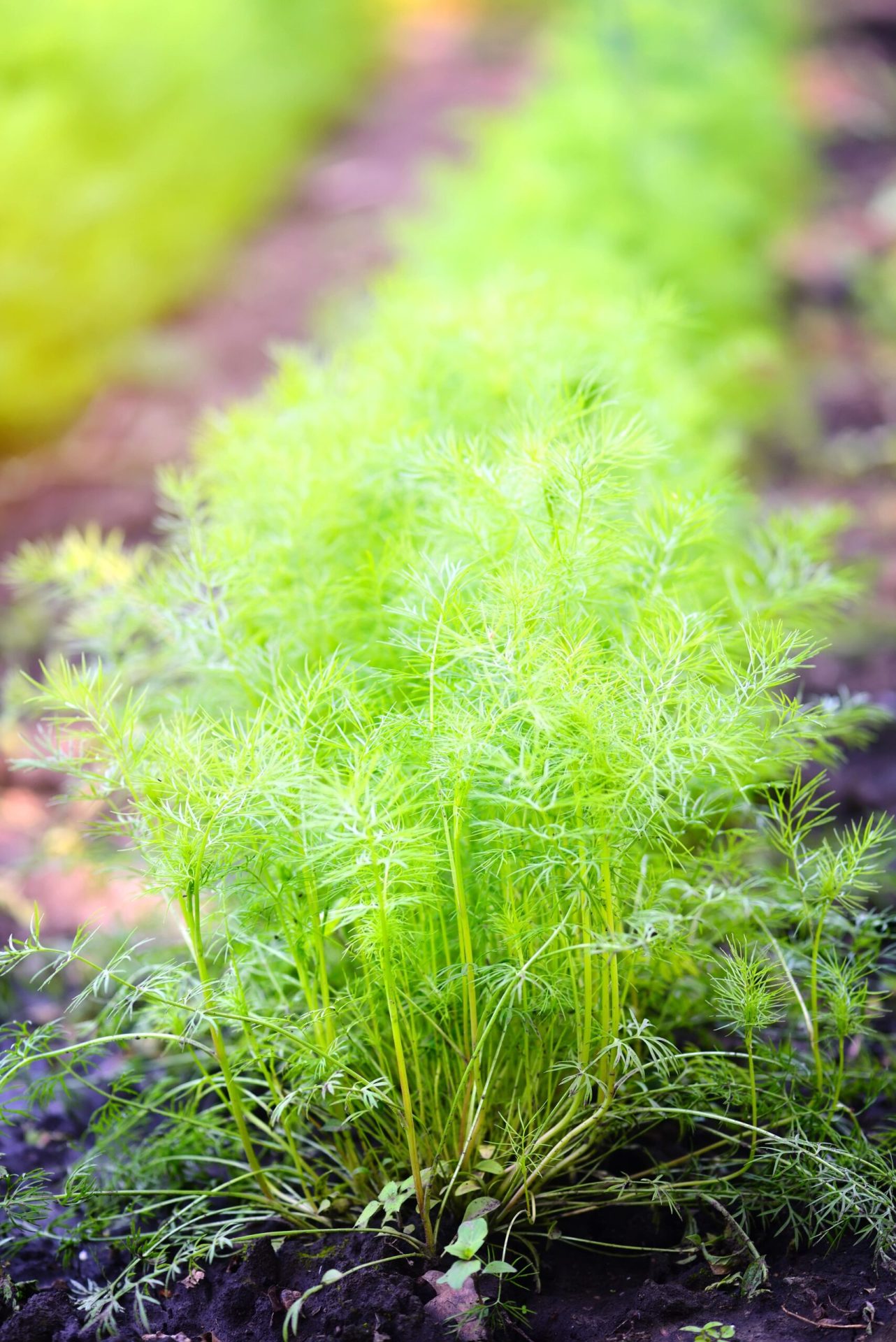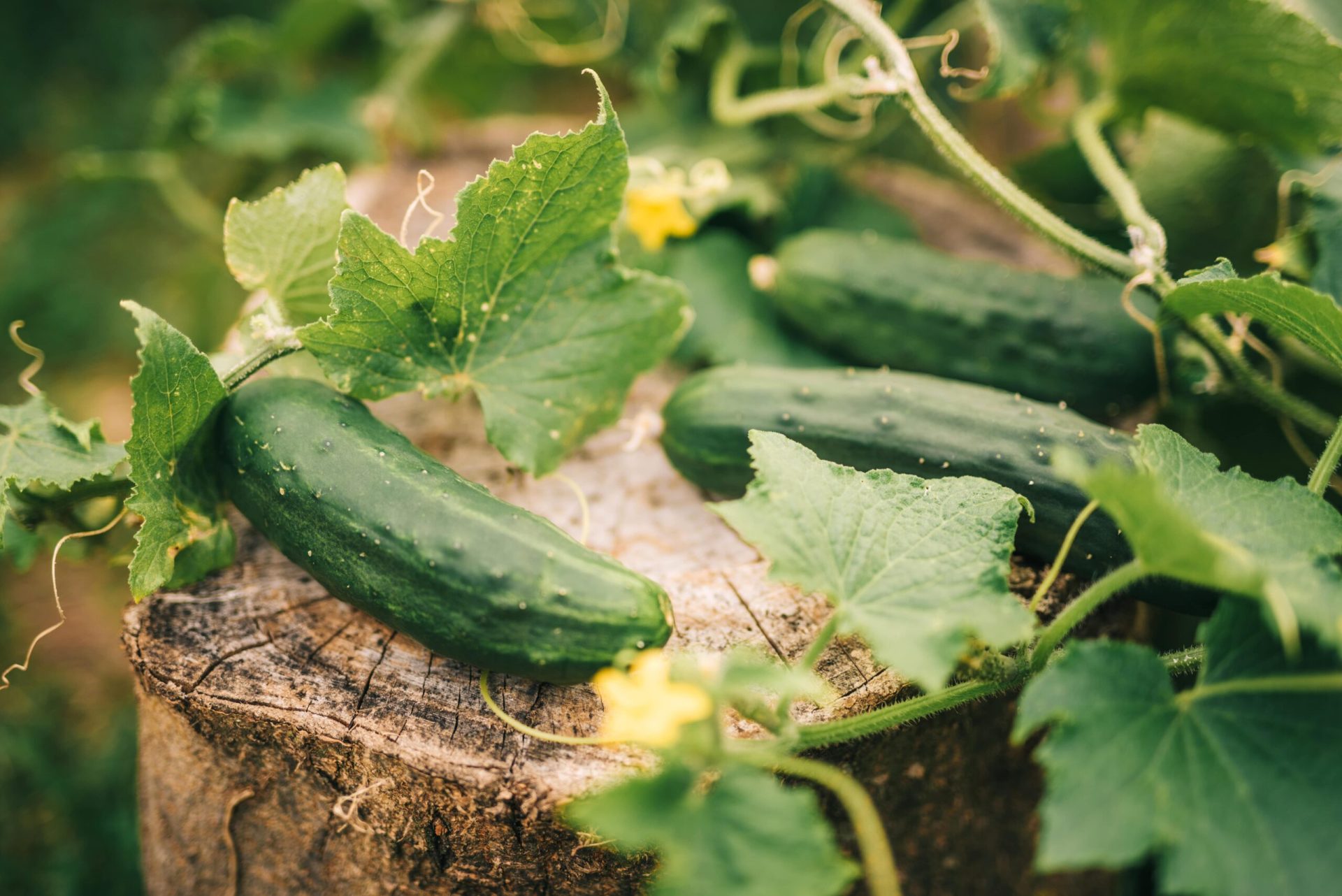Growing broccoli is a favorite among gardeners. Not only is broccoli a garden superfood, but it’s also easy to grow if the right conditions are met.
Ultimately, growing broccoli requires patience and care. However, the excitement of watching broccoli grow from seed is well worth the wait. Need some help getting started? This guide covers everything you need to know about growing broccoli, from the growth stages of broccoli to requirements.
Growing Broccoli 101: Step-by-Step Guide
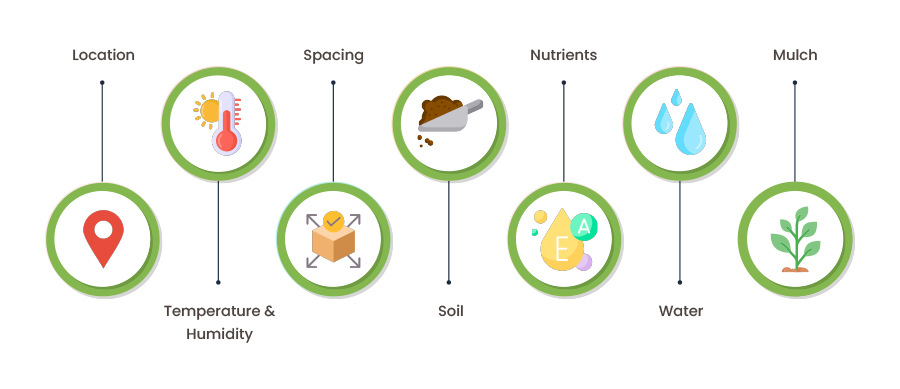
1. Location
Broccoli requires full sun, meaning at least 6 hours of direct sunlight. It might need partial noon shade in an extremely hot climate to avoid bolting, seed production, or flowering.
2. Temperature & Humidity
Broccoli plants grow best in temperatures ranging from 65 to 70°F. Bolting takes place when temperatures rise above 80°F. Therefore, this is an ideal early summer or fall crop. If the soil is adequately moist and has proper aeration around plants, humidity doesn’t cause an issue.
3. Spacing
Space broccoli plants about 18 inches apart. If planted in rows, space rows about 2-3 feet apart. To decrease aisle space, you can double-plant two or three broccoli plants in each row.
4. Soil
Broccoli plants require rich, loamy soil with plenty of organic matter. We also need a good drainage system. A slightly acidic to neutral pH range is suitable for soil.
5. Nutrients
Before planting broccoli, mix compost into the soil to improve drainage and nutrient content. Once the seedlings emerge after a few weeks, fertilize using an organic low-nitrogen fertilizer. Fertilizing the plant throughout its growing season is essential.
6. Water
Keep the soil damp but not wet. Water the plant from the base up, because watering from above can promote rot. About 1- 1.5 inches of water is enough for a week. You can spread a layer of mulch to keep the soil moist.
7. Mulch
Mulch is essential in cooling down the soil from 4 to 6 degrees. Spread a 2-to-4-inch layer of chopped leaves, hay, or straw over the soil around and in between the soil.
How to Grow Broccoli from Seeds?
Broccoli requires a soil temperature of at least 40°F for germination. To grow broccoli in a container, use a shallow tray filled with moist seed-starter mix.
Place the container in bright indirect sunlight in a spot that ideally remains between 45 and 85°F. Keep the soil moist, and you should observe germination within a week. Before planting outdoors, be sure to harden off the seedlings.
How to Grow Broccoli in Containers?
When you choose to grow broccoli in pots, you have two options: growing broccoli from seed or by transplanting seedlings.
If you are growing broccoli in pots, plant seeds indoors 6-7 weeks before your location’s last frost date. You can then transplant seedlings after the last frost.
You should grow broccoli in a container in a location that receives about 6 to 8 hours of sunlight daily. To grow broccoli, use a good potting mix in containers and make sure it drains well.
For better growth and healthy plants, amend potting soil using compost, slow-release fertilizer, and aged manure. It provides nutrients to your broccoli plant.
The key ingredient to growing broccoli in containers is selecting the right pot. You can quickly grow a single broccoli plant in a pot of 8 to 10″ diameter.
When to Plant Broccoli?
You should plant broccoli in cooler months of the year to get the best results. The high temperature of the summer months affects its growth. Plant them in early spring, which will typically yield a crop by late summer.
If you live in a milder region, consider planting broccoli for a winter harvest in late summer or fall.
how to Plant Broccoli?
- To start seeds outdoors, sow them ½ inch deep and 3 inches apart.
- Once seedlings reach a height of about 2 to 3 inches, thin them as this will help plants to grow 12 to 20 inches apart
- To start seeds indoors, you can plant transplants about 4 to 6 weeks old outdoors, 12 to 20 inches apart in holes. Plant seeds slightly deeper than the depth of the container
- After this space rows of broccoli about 3 feet apart
- Water them well at the time of planting
Broccoli Growing Stages

1. Germination
In this stage, the seeds are directly sown in soil or in seed-starting pods. After sowing, roots and first leaves emerge in 5-10 days. Broccoli seeds can germinate between 45°F and 75°F. Warmer temperature speeds up germination a little.
2. Seedling
The plant enters the seedling stage after seeds germinate and emerge from the soil. During this point, photosynthesis occurs, and the plant grows and develops.
This stage starts with just two leaves; the true leaves come next. Once the plant attains 4-5 sets of leaves, you can plant broccoli in your garden. Temperatures should be around 60-65°F for the best growth.
3. Vegetative
With enough leaves and established roots to produce energy, your broccoli enters the vegetative growth stage. Over 60 days, your broccoli plant will grow wider and taller. This is when broccoli’s head will form.
It starts small in the center of the stalk and grows wider and larger as time passes. The ideal temperature for broccoli is between 65-75°F.
Warm temperature causes premature flowering. At this stage, it is essential to feed your plants as required and water them regularly if the season is dry.
4. Harvesting
When your broccoli is ready to harvest, its center head will be deep green with tightly packed buds. The head size can range from 4 to 8 inches.
It depends on the type of plant, plant density, and sunlight exposure. If buds loosen or you notice yellow flowers, harvest them immediately.
5. Side shoot
Your plant will start producing outside shoots once you harvest the main broccoli stalk. Each shoot develops into small broccoli heads that you can harvest and eat.
6. Flowering
If you wait too long to harvest the center broccoli head, it will gradually begin to flower. So, gathering at the right time is very crucial.
Temperature also plays a vital role in when your broccoli starts to flower. Broccoli does best in 60-70°F, but if the temperature is above 80°F for a certain period, the plant will start to flower.
7. Seed formation
Once the plant flowers and pollinators pollinate them, the petals will drop, and the plant will begin to develop seed pods. The seed pods mature when they turn brown and get dry.
You can harvest the stalks with pods on them. Break open the pods to collect seeds and plant them next year or in the fall. Ensure they are completely dry before storage.
How to Transplant Broccoli Seedlings
Starting with broccoli seedlings is a great option for growing healthy plants. Broccoli transplants are available at most garden centers and farmer markets. Growing broccoli from seedlings is the easiest way to start your garden and get fresh broccoli quickly.
If you buy seedlings from a nursery, you need not harden them off. To start seedlings indoors, harden them before moving them into outdoor containers. It helps solve issues with transplant shock.
You can transplant broccoli seedlings outside when they are about 4 to 6 weeks old.
How to Harvest Broccoli?
- The best time to harvest broccoli is in the morning. The buds are tight and firm just before the heads start to flower.
- If you notice yellow petals, it is time to harvest immediately, and the vegetable’s quality will decrease quickly.
- Cut heads from the plant, taking at least 5 inches of stem. Make a slant cut on the stalk to allow water to slide away.
- Several broccoli varieties develop side shoots when harvesting the main head. If the summer is not too hot, one can harvest one plant for several weeks, sometimes from spring to fall.
- When you harvest broccoli, leaving 2 or 3 inches of the stem behind is essential, which will help new buds form on these stems.
How to Prepare Broccoli for Storage?
Washing
Before you wash broccoli:
1. Remove rubber bands or ties from the broccoli bunch.
2. Take a large bowl and pour cold water in it.
3. Gently place the vegetable in it and swish it around to remove any potential contaminants or dirt.
4. Rinse each floret under running water—also, thoroughly clean crevices between florets, where dirt and debris can hide. After washing, dry it thoroughly before you proceed to store it.
Trimming & Cutting
Trim and cut broccoli properly to ensure optimal freshness. Begin the process by detaching leaves from the stalk.
Use kitchen shears to trim leaves close to the stalk. Examine the stalk to check for woody parts. After this, cut the broccoli into smaller pieces.
Blanching
Blanching this vegetable helps in preparing it for long-term storage. It helps preserve the texture, color, and nutritional value of broccoli. For blanching, start by bringing a large pot of water to boil.
Prepare an ice bath when the water heats up by filling cold water and ice cubes in a bowl. Carefully add stalks or florets to the boiling water and cook for 2-3 minutes. Boil them until they are slightly tender but still crisp.
After this transfer, put the broccoli in the ice bath and keep it until it is blanched. It helps stop the cooking process and helps retain the vibrant green color. Drain the vegetable thoroughly and pat it dry. You can now store broccoli.
How to Store Broccoli?
Store broccoli properly to keep it fresh, extend its shelf life, and maintain its green color and nutritional value.
With proper storage methods, you can ensure that this veggie stays crisp and delicious for a long time. If you want broccoli with longer storage potential, opt for varieties known for their extended shelf life.
- The ideal temperature to store broccoli is around 32 to 36°F. This temperature helps slow the ripening process and prevents the vegetable from becoming too soft or developing off-flavors.
- Maintain a humidity level of about 90% to 95% to keep the vegetables crisp and hydrated.
- Store the vegetables away from ethylene-producing vegetables and fruits to prevent premature spoilage.
Best Broccoli Varieties
1. Calabrese Broccoli – This variety matures in 65 days and has its prolific sprouting side shoots following the first harvest. It comprises large green heads, tightly packed florets, and thick stalks. Its tender texture and mild yet slightly sweet flavor are well-known. It is a popular choice for commercial growers and home gardeners.
2. Romanesco Broccoli – This variety comprises a unique fractal-like spiral pattern on its head. Its lime-green colored heads have beautiful spiral green heads like a sea coral and possess a nutty flavor. Roman cauliflower is a vegetable that resembles both cauliflower and broccoli in texture and color.
3. Sprouting Broccoli – This variety has leafy and tall stems with single florets instead of a central crown. It possesses a slightly bitter flavor compared to other varieties. The main types of sprouting broccoli are white and purple. Its leaves, longer stalks, and small florets are all edible.
Common Pests & Diseases Problems with Broccoli
Like cabbage, broccoli is susceptible to similar pests and diseases. Common pests include cabbage worms, cabbage loopers, root maggots, and aphids. You can use row covers to prevent pest infestations.
Diseases that impact the growth of broccoli plants are black rot, clubroot, and blackleg. You can control diseases by rotating where you have planted your broccoli yearly. Besides, you must ensure the plant grows in the best conditions.
How to Manage Disease in Plants?
To manage diseases in broccoli plants, use disease-free seeds or disease-resistive varieties. When planting and throughout the growing season of broccoli, you should remove debris and leaf litter from garden beds.
Preventative measures include crop rotation and properly sanitizing equipment. If rot occurs there, you should only plant broccoli in the same location for three years. If possible, use chemical control as required and follow the label instructions.
Common issues and considerations for growing broccoli
- Increased day length and high temperatures can also cause bolting in broccoli plants. Bolt means the plant produces seeds or flowers too early, making the vegetable unusable.
- As broccoli has a shallow root system, you should be extra cautious to cultivate ground near plants.
- Consider mulching around plants for weed control.
- Broccoli can successfully thrive in growing temperatures from 65 to 75°F.
Companion Plants for Broccoli
Broccoli emits chemicals that harm other plants in the garden. The point of growing companion plants with broccoli is that it will benefit the other plant somehow. Companion plants have multiple benefits. They help keep pests away and attract good bugs.
They also improve the soil and cover the ground. Additionally, they provide shade and mark areas. Moreover, they help plants grow and make veggies taste better.
You can grow the following companion plants alongside broccoli:
